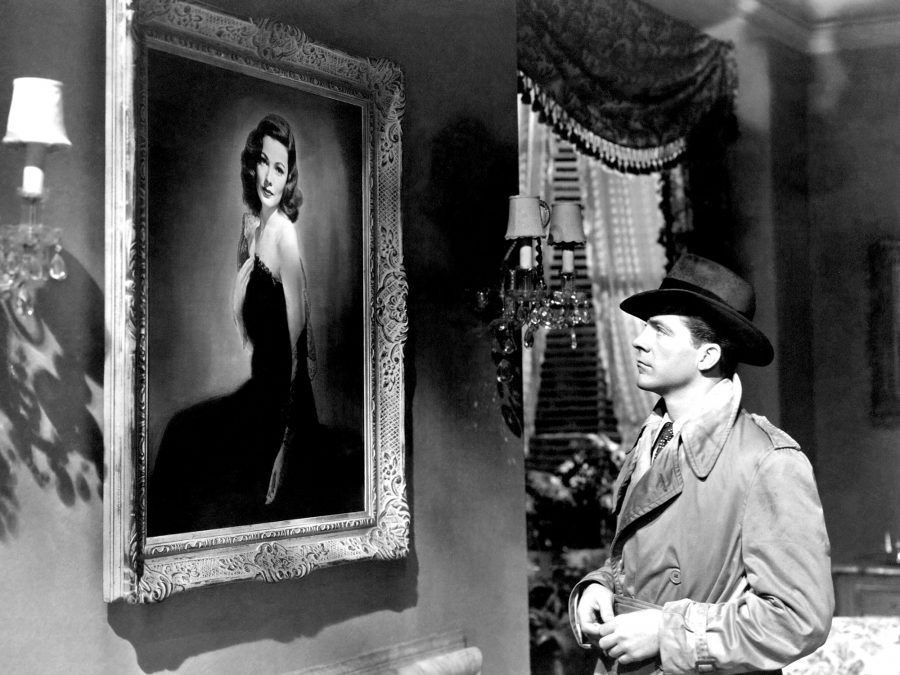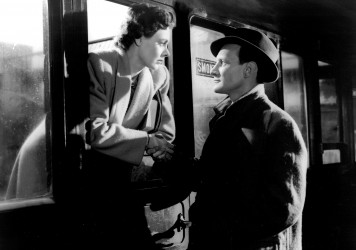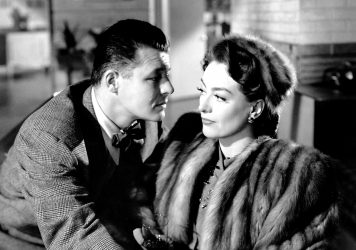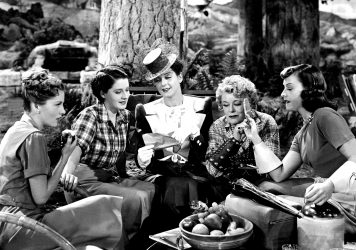A new Blu-ray edition provides an opportunity to revisit Otto Preminger’s slyly subversive noir masterpiece.
Despite being a filmmaker who refused to tie himself down to any single genre, its remarkable how widely held the generalisation remains that Otto Preminger’s body of work can largely be summed up through division into two major camps of interest: the epic, dialogue driven “social issue” pictures and the run of pristine, eccentric Noirs he made under contract to Fox in the 1940s. For a start, any such attempt at over-simplification for the purposes of a Tweet-length career précis allows no room for any of his strongest (Bonjour Tristesse), his strangest (Skidoo) or his most twisted (Angel Face) examinations of human needs and foibles.
Preminger’s filmography is one ripe for rediscovery, and the upcoming Masters of Cinema Blu-ray debut of his 1944 film, Laura, is perhaps the perfect place to begin any such journey of reappraisal. In fact, this film alone provides sufficient basis to rubbish notions of classicism that linger in preconceptions of his work, those that fail to take into account the stark modernism and slyly subversive approach to both character and convention that bubble beneath the surface of almost every one of his films.
That’s not to say Preminger entirely eschewed genre. Throughout his career his concerns lay primarily in the mechanics of any given area: the process of the courtroom (and by extension the courtroom drama as genre) in Anatomy of a Murder and The One Man Mutiny; the machinations of Washington politics in Advise & Consent; and through his enduring commitment to strong female characters, turning the tables on the “Women’s Picture” to create a proto-feminist masterpiece in Daisy Kenyon.
It’s an approach that was also true of those films commonly termed his film noirs, of which Laura remains his most famous and successful. For all its urban, rain-soaked nights and dancing shadows, one could argue that Laura shares little else with the common idea of what constitutes noir, utilising the backbone of dozens of murder-mystery, detective dime novels to set up a tale of male domination and psychosexual projection, shot through with a contemptuously satirical eye on class-driven social strictures.
While Laura, indeed, contains a hard-boiled detective out to solve a murder, there’s no femme fatale in any traditional sense, no woman to send him on a course towards murder, no predestination laden with doom. Laura Hunt is already dead, disfigured beyond recognition by a shotgun blast to the face, leaving only a portrait as the memento mori around which male fascination revolves. Even our point of access to the narrative remains fluid and ambiguous: whilst beginning with a voice-over typical of noir, it proves to stem not from the ostensible hero of the piece but from one of the prime suspects, Laura’s benefactor and our unreliable narrator, the devilishly egomaniacal Waldo Lydecker (Clifton Webb).

Not that we can rely on detective Mark McPherson (Dana Andrews) as custodian of our sympathies or curiosity either, despite the quick shift to his perspective in the opening moments. His professional objectivity proves as susceptible to Laura’s allure as those under investigation, falling in love with the dead girl – or at least the idea of her – as recounted by those that knew her. During one particularly evocative sequence, he spends an evening alone in Laura’s apartment, rifling through her things. Our detachment becomes cemented. It’s Preminger’s eyes through which we now monitor the story. Then, the sound of a door opening off-screen turns everything we thought we knew on to its head.
The trailer for Laura asks “Who is Laura? What is Laura?” – questions that provide opposing positions in the world of the film. Does Laura Hunt exist at all other than as a projection of the fantasies and desires of the male characters? For Waldo, Laura is another treasure to possess and display, to jealously guard from the grips of her lover, Shelby Carpenter (Vincent Price), a work-shy Southern ‘gent’ with an eye to climbing the social ladder. For him, Laura is an expensive accessory to draw attention away from his cheap suit.
There is the sense that Preminger is trying to protect his Laura from the rogue’s gallery of degenerates that surround her. He allows her to follow her romantic inclinations, but eschews the internal life of the character afforded by Vera Caspary (on whose novel Laura is based), who allowed her to narrate a pivotal part of her own story. He persists with his vision of Laura as a sexless vessel for male projection. Like Hitchcock’s famous definition of the MacGuffin, Laura remains an empty centre around which the plot can revolve.
Preminger’s direction, coupled with Joseph LaShelle’s exquisite photography, amplifies these oppositions in perception of Laura. The enormous portrait which hangs above her fireplace and which opens the film bears little relation to the image of the woman herself as personified by Gene Tierney. Preminger goes a long way in his attempts to normalise her, to ground her as a means of contrast to the way she’s perceived by those that surround her. One of the few times we see her in anything approaching a movie-star close-up, it’s under interrogation, with a harsh, unflattering light glaring in her face, insistent on scrutiny, punishing her beauty.
The objectivity of the roving camera in Laura offers the first example of Preminger’s breathtaking control, creating a tangible sense of physical space within the studio locations, most notably Laura’s apartment. It’s an effect that pays dividends in both the central set-piece and the heart-stopping climax.
Famously stating that if he could, he’d shoot the entire film in a single take, Preminger’s approach to camera blocking perhaps stems from his theatrical background. An emphasis on entrances and exits, of characters alone with their thoughts and actions within a given space, all provide psychological insight and narrative focus through push and pull, whilst simultaneously allowing for a cynical observational distance in stillness when required.
Throughout his career, Preminger demonstrated a fascination for the quirks and perversions of human character and behaviour, the oddities and peculiarities that simmer beneath the surface. Perception and actuality are the opposing forces that drive his best work, deconstructing what we think we already know to present it to us afresh. Laura proves no exception. It’s this exceptional filmmaker’s first masterpiece, but it’s certainly not his last.
Laura is available via Eureka’s Masters of Cinema imprint on 14 January.
Published 14 Jan 2019
An overdue revival of one of the great film noirs.
Riveting and erotic. Masterful.
Preminger’s greatest film? It might just be.

Rural train platforms were transformed forever by this high peak of screen romance from David Lean.

In tandem with a big Joan Crawford retrospective, this moving noir scorcher returns to cinemas.

Norma Shearer, Joan Crawford and Rosalind Russell are as sensational as ever in George Cukor’s classic Hollywood comedy.